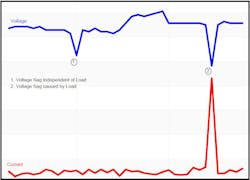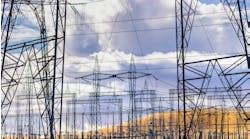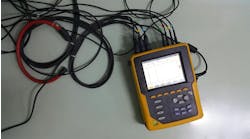There are a handful of ways to find the source of a power quality (PQ) problem. One way is to stare at two pieces of equipment at a facility, and if equipment A turns off equipment B (while it’s running), then it can be concluded that A has an effect on B. But what if equipment A is not located at your facility? Maybe it’s located at another facility miles down the road. It’s already challenging enough to troubleshoot equipment within your facility, but now there is an additional hurdle to the investigation.
Unless this is a harmonic issue, most of the time the electrical current will lead the investigation to the source of the problem.There are two distinct characteristics when reviewing an electrical current profile. The obvious characteristic is the magnitude of the current. An inrush of current indicates electrical equipment is turning on, causing the voltage to sag. For soft starters and adjustable speed drives (ASDs), the current’s magnitude will not be as high compared to a motor operating through a line contactor, but there will be a noticeable step in the current. Conversely, issues may not always arise when electrical equipment is coming online. It is possible that during operations, the electrical equipment can start to show signs of failure through arcing. This leads to another characteristic to review: the current’s distortion level. A high enough current distortion can cause a voltage distortion, which then effects sensitive electrical equipment. However, current distortions are not always an indication of failing equipment. For example, motor drives can create high levels of current distortion through normal operation. Distortion levels, whether they are current or voltage, should adhere to “IEEE 519 – Recommended Practice and Requirements for Harmonic Control in Electric Power System” thresholds. This standard is a good reference point when determining if the distortion levels are within recommendation.
It’s helpful to have a monitoring device that can plot the voltage and current on the same time axis. This provides clarity on when the voltage is reacting or not reacting to the different pieces of electrical equipment in operation. There is one trap that exists, and that is when the voltage sags prior to the current rising. This indicates a system is recovering or responding to the deviation in voltage.




